Why St. Ignatius Cathedral Xujiahui Should Be on Your Shanghai Itinerary
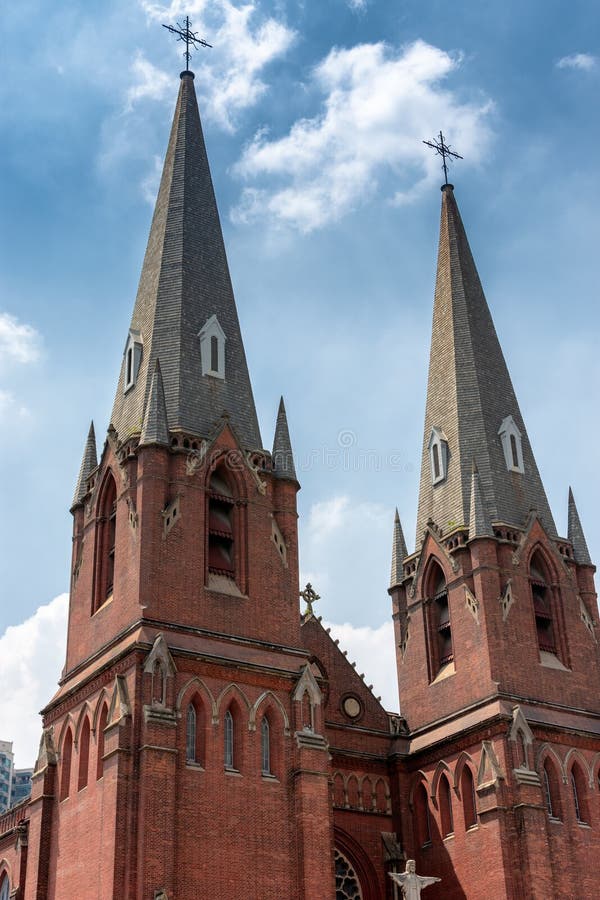
An Essential Guide to Visiting St_Ignatius_Cathedral_Xujiahui
Nestled in the vibrant Xujiahui district of Shanghai, St. Ignatius Cathedral stands as a majestic testament to the city’s rich tapestry of history, architecture, and faith. Often referred to as the “Vatican of Shanghai,” this architectural marvel is the largest Roman Catholic cathedral in China, drawing both locals and international travelers with its stunning Gothic design and profound spiritual atmosphere.
With its soaring bell towers, intricate stone carvings, and breathtaking stained glass windows, St. Ignatius is more than just a place of worship; it’s a captivating journey through time. The cathedral has witnessed the ebb and flow of Shanghai’s history since its construction in the early 20th century, enduring the trials of the Cultural Revolution before being meticulously restored to its original grandeur.
As you step inside, the serene ambiance envelops you, inviting reflection amidst the grandeur of 64 stone round pillars and the soft glow of sunlight filtering through rose-like windows. Whether you’re seeking spiritual solace, architectural inspiration, or a glimpse into Shanghai’s colonial past, St. Ignatius Cathedral offers a unique experience that resonates with all who visit. Join us as we explore the essential details for making the most of your visit to this iconic landmark, where faith and history intertwine in the heart of one of the world’s most dynamic cities.
In This Guide
- An Essential Guide to Visiting St_Ignatius_Cathedral_Xujiahui
- The Rich History and Legends of St_Ignatius_Cathedral_Xujiahui
- Main Highlights: What You Absolutely Can’t Miss
- Planning Your Visit: A Practical Guide
- Tickets: Prices, Booking, and Tips
- How to Get There: A Complete Transportation Guide
- Local Cuisine and Accommodation Nearby
- Frequently Asked Questions
- Final Thoughts on Your Trip
The Rich History and Legends of St_Ignatius_Cathedral_Xujiahui
Nestled in the bustling Xuhui District of Shanghai, St. Ignatius Cathedral, also known as Xujiahui Cathedral, stands as a testament to the rich tapestry of cultural and religious history woven into the fabric of the city. Constructed between 1904 and 1910, this architectural gem is not only the largest Roman Catholic cathedral in Shanghai but also a symbol of the enduring influence of Western missionaries in China.
The cathedral’s origins can be traced back to the early 17th century when Jesuit missionaries began to establish their presence in Shanghai following the First Opium War. The area, once a small village, became a focal point for Catholic activities, particularly due to the efforts of Xu Guangqi, a prominent Chinese scientist and statesman of the Ming Dynasty who played a critical role in introducing Western science and Christianity to China. After the original church built in 1851, the Jesuits envisioned a grander structure that would reflect their commitment to the faith and the burgeoning Catholic community.
Designed in the Gothic architectural style, St. Ignatius Cathedral features elements reminiscent of medieval European churches. Its imposing façade, with two towering bell towers reaching heights of 60 meters, beckons visitors from afar. Inside, the cathedral is adorned with 64 intricately carved stone pillars, stained glass windows depicting biblical scenes, and a breathtaking main altar that was sculptured in Paris before its journey to Shanghai.
Throughout its history, the cathedral has witnessed significant events and transformations. It was a central hub for missionary activity, housing a library, an orphanage, and a college, making it a beacon of education and charity in the region. The First National Bishop Conference of Catholicism in China convened here in 1924, solidifying its importance within the Catholic community.
However, the cathedral’s journey has not been without sorrow. During the Cultural Revolution in the 1960s, the church suffered extensive damage; its majestic bell towers were partially destroyed, and its interior was desecrated. The building was repurposed as a warehouse, a fate that seemed to seal its decline. Yet, resilience prevailed, and the cathedral underwent restoration, reopening to the public in the late 1970s.
Today, St. Ignatius Cathedral continues to thrive as a spiritual sanctuary and a cultural landmark. It welcomes thousands of visitors and worshippers each week, offering a glimpse into its storied past while serving as a vibrant part of Shanghai’s contemporary landscape. The cathedral not only stands as an architectural marvel but also as a reminder of the enduring power of faith and community amidst the waves of change that have shaped this dynamic city.
For travelers seeking to explore the depth of Shanghai’s history, a visit to St. Ignatius Cathedral is an opportunity to step into a narrative that spans centuries, revealing the intersections of culture, faith, and resilience in one of the world’s most vibrant cities.
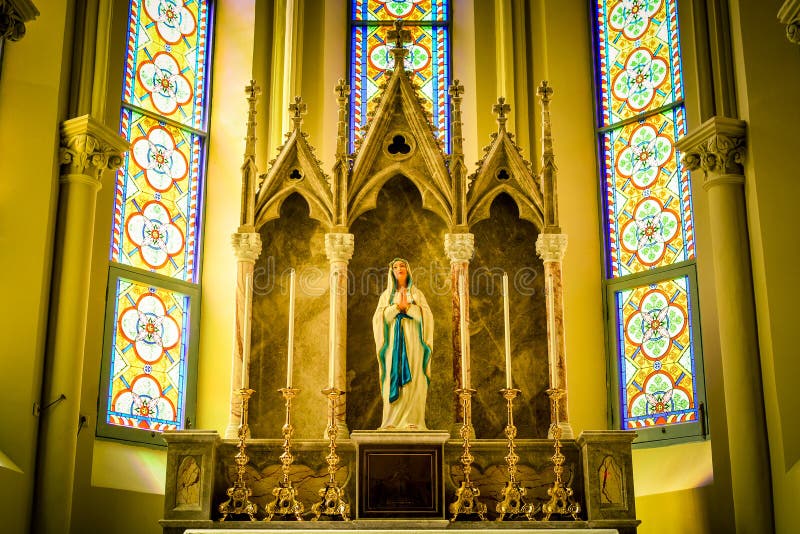
St_Ignatius_Cathedral_Xujiahui.
Main Highlights: What You Absolutely Can’t Miss
St. Ignatius Cathedral, often referred to as the “Vatican of Shanghai,” is a magnificent testament to Gothic architecture nestled in the bustling Xujiahui district. As one of the largest and most significant cathedrals in China, it offers both historical depth and architectural splendor that international travelers simply cannot miss. Here are the key highlights that make this cathedral a must-visit destination in Shanghai.
Architectural Brilliance
The cathedral stands as the largest Roman Catholic church in Shanghai, showcasing a stunning Gothic design that draws inspiration from medieval French architecture. With its grand length of 83.3 meters and soaring bell towers reaching up to 60 meters, it is an impressive sight. The structure is adorned with red brick walls, white stone pillars, and a gray slate roof, creating a striking contrast against the skyline.
The Majestic Interior
Upon entering, visitors are greeted by 64 intricately carved stone pillars, crafted from stones sourced from Mount Jin in Suzhou. The interior is flooded with light from over 60 pointed-arch windows and six large rose windows, each telling a different story through vibrant stained glass. The main altar, sculpted in Paris and transported to Shanghai in 1919, features a touching depiction of St. Mary cradling Jesus, captivating all who enter.
Historical Significance
The cathedral is not just a place of worship; it is steeped in rich history. Originally constructed in 1904, it became a center for Catholicism in southern China, fostering educational and charitable initiatives in the surrounding area. Although it suffered damage during the Cultural Revolution, the cathedral has been lovingly restored to reflect its former glory, allowing visitors to connect with its storied past.
A Spiritual Experience
For those interested in experiencing the spiritual atmosphere, the cathedral holds various masses throughout the week, including an English-language mass that caters to international visitors. The serene ambiance, accentuated by the cathedral’s intricate designs and echoes of prayers, provides a unique opportunity for reflection and connection.
Visiting Information
St. Ignatius Cathedral is open to the public on weekends, with guided tours offered every half hour. The visiting hours are limited to 13:00 – 16:00 on Saturdays and 14:00 – 16:00 on Sundays, making it essential to plan ahead. Visitors are encouraged to dress respectfully and observe silence within the sacred space.
Access and Location
Reaching the cathedral is straightforward, thanks to its central location. Travelers can take Shanghai Metro Line 1, 9, or 11 to Xujiahui Station and walk south for about 400 meters. Alternatively, several bus lines service the area, providing easy access to this architectural gem.
Final Thoughts
A visit to St. Ignatius Cathedral is not just a tour of a building; it’s an immersion into the rich tapestry of Shanghai’s cultural and religious history. Whether you are an architecture enthusiast, a history buff, or simply seeking a tranquil escape from the city’s hustle and bustle, this cathedral promises an unforgettable experience. Don’t miss the chance to witness this magnificent structure that stands as a beacon of faith and artistry in the heart of Shanghai.
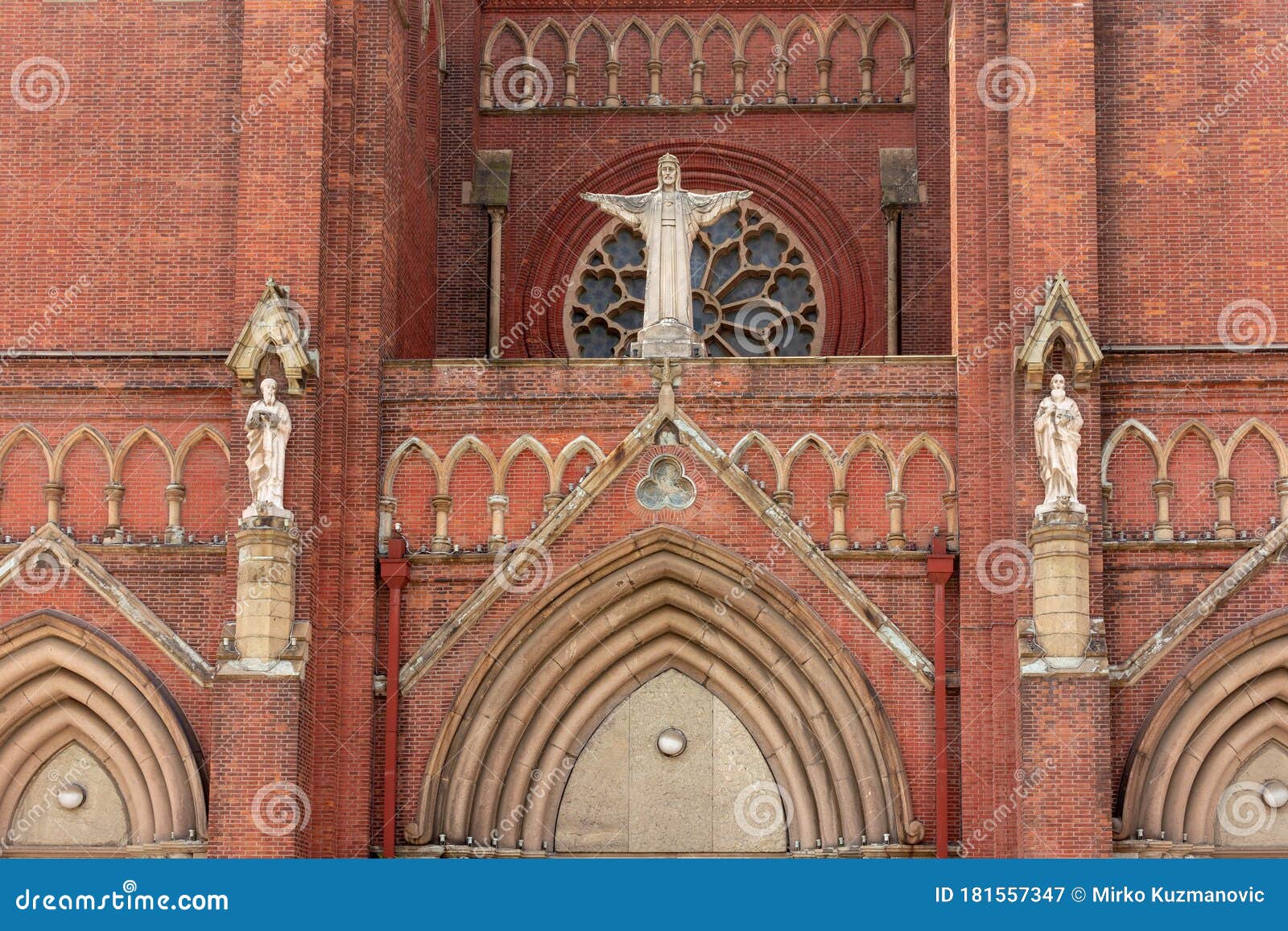
St_Ignatius_Cathedral_Xujiahui.
Planning Your Visit: A Practical Guide
St. Ignatius Cathedral in Xujiahui is not just a place of worship; it’s a magnificent architectural marvel rich in history and culture, attracting visitors from around the globe. If you’re planning to visit this iconic site in Shanghai, here’s a comprehensive guide to help you make the most of your experience.
Getting There
By Subway:
The easiest way to reach St. Ignatius Cathedral is via the Shanghai Metro. Take Line 1, Line 9, or Line 11 and get off at Xujiahui Station. From there, it’s just a 400-meter walk south to the cathedral.
By Bus:
Several bus lines will also take you close to the cathedral. You can board bus numbers 44, 93, 548, 830, 836, 931, or 958, and get off at Hongqiao Road Gongcheng Road. The cathedral is approximately 300 meters south from the stop.
Opening Hours
St. Ignatius Cathedral welcomes visitors during specific hours:
- Saturdays: 1:00 PM – 4:00 PM
- Sundays: 2:00 PM – 4:00 PM
During these times, volunteers offer guided tours every 30 minutes, providing insights into the cathedral’s history and architecture.
Mass Schedule
For those interested in attending a service, the cathedral hosts various masses:
- Ordinary Days (Monday – Saturday): 6:15 AM, 7:00 PM
- Children’s Mass (Saturday): 4:30 PM
- Saturday Evening Mass: 6:00 PM
- Sunday Mass: 6:00 AM, 7:30 AM, 10:00 AM, 12:00 PM (English Mass), 6:00 PM
Note: Masses are popular, so arrive early to secure a seat.
What to Expect Inside
As you enter St. Ignatius Cathedral, prepare to be awed by its stunning Gothic architecture. The cathedral spans 6,670 square meters and can accommodate around 3,000 worshippers.
-
Architectural Highlights: Look for the 64 stone round pillars, intricate stained glass windows, and elaborate altars. The main altar, originally sculpted in Paris, features a beautiful sculpture of St. Mary holding Jesus.
-
Silent Reflection: Visitors are encouraged to maintain silence to respect the sacred atmosphere. Make sure to turn off your mobile phone and refrain from making calls.
-
Dress Code: To preserve the reverence of the space, visitors should avoid wearing slippers, tank tops, or mini skirts.
Historical Significance
St. Ignatius Cathedral, often called the “Vatican of Shanghai,” holds a significant place in the city’s history. Originally constructed in 1904, it has witnessed the ebb and flow of Shanghai’s rich cultural tapestry. The cathedral was also a central hub for missionary activities in the region and has survived tumultuous times, including the Cultural Revolution.
Tips for Your Visit
-
Plan Ahead: Since the cathedral is only open for limited hours, plan your visit accordingly. Arrive early if you wish to attend Mass or join a guided tour.
-
Respect the Space: As a place of worship, it’s important to be mindful of your behavior and dress.
-
Take Your Time: Allow yourself to wander and soak in the beauty of the architecture and the serene atmosphere.
-
Photography: While it’s generally allowed, be discreet and respectful during services.
Conclusion
Visiting St. Ignatius Cathedral in Xujiahui is a unique opportunity to immerse yourself in a blend of faith, history, and stunning artistry. Whether you are there to pray, reflect, or simply admire the architecture, this cathedral promises to be a highlight of your trip to Shanghai. Enjoy your visit!
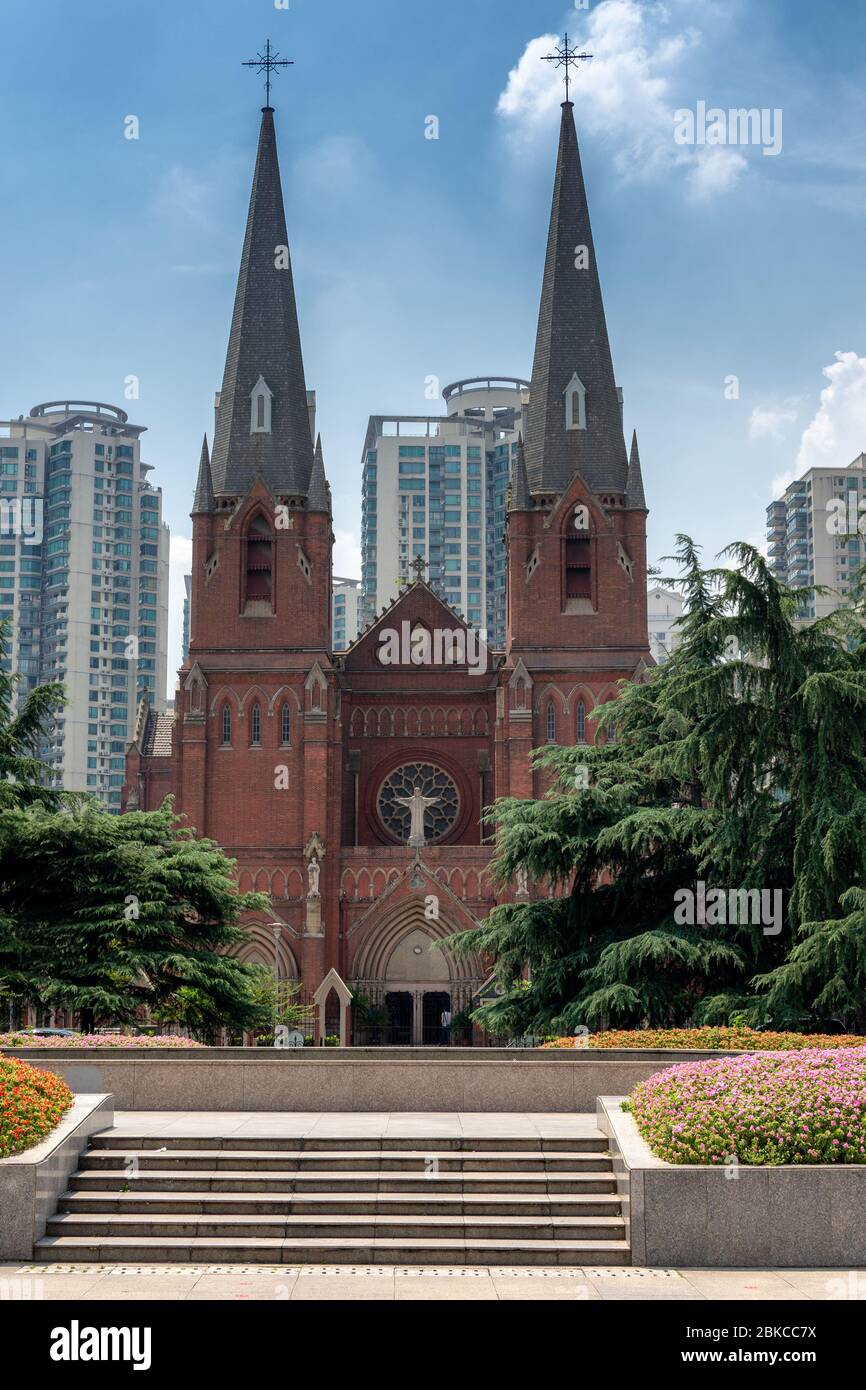
St_Ignatius_Cathedral_Xujiahui.
Tickets: Prices, Booking, and Tips
Visiting St. Ignatius Cathedral in Xujiahui, one of Shanghai’s most impressive architectural landmarks, is an experience that blends spirituality with history. Here’s everything you need to know about accessing this magnificent site, including ticket information, booking tips, and practical advice for your visit.
Admission Details
St. Ignatius Cathedral is open to the public for free during specific hours. Currently, visiting times are as follows:
– Saturdays: 1:00 PM to 4:00 PM
– Sundays: 2:00 PM to 4:00 PM
During these hours, volunteers offer guided tours every 30 minutes, providing insightful information about the cathedral’s rich history and architectural features.
Mass Attendance
For those interested in experiencing a mass service, there are several options throughout the week, including special services in English:
– Ordinary Days (Monday to Saturday): 6:15 AM and 7:00 PM
– Children’s Mass (Saturday): 4:30 PM
– Lord’s Day Mass (Saturday): 6:00 PM
– Sunday Mass (English): 12:00 PM, along with other services at 6:00 AM, 7:30 AM, and 10:00 AM.
Booking Tips
- No Advance Booking Required: Admission is free, and you don’t need to book tickets in advance for general visits. However, if you plan to attend a mass, arriving early is recommended to secure a seat, especially during busy holiday periods.
- Respect the Atmosphere: Visitors are encouraged to maintain silence and ensure mobile devices are turned off or set to silent mode. Be mindful of your attire; clothing like slippers, tank tops, and mini skirts are not permitted inside the cathedral.
Getting There
St. Ignatius Cathedral is easily accessible via public transportation:
– By Subway: Take Line 1, Line 9, or Line 11 and alight at Xujiahui Station. From there, it’s about a 400-meter walk south to the cathedral.
– By Bus: Buses 44, 93, 548, 830, 836, 931, or 958 will take you to Hongqiao Road Gongcheng Road. From the bus stop, it’s a short 300-meter walk to the cathedral.
Final Thoughts
Visiting St. Ignatius Cathedral is not only a chance to admire its stunning Gothic architecture but also an opportunity to engage with Shanghai’s rich cultural tapestry. Whether you’re attending a mass or simply exploring the serene interiors, this cathedral offers a unique glimpse into the city’s historical narrative. Be sure to check the visiting hours and plan your trip accordingly for a fulfilling experience.
How to Get There: A Complete Transportation Guide
Visiting St. Ignatius Cathedral in Xujiahui, Shanghai, is a journey worth undertaking, and getting there is straightforward. Here’s how you can reach this magnificent Gothic-style cathedral, nestled in one of Shanghai’s vibrant districts.
By Subway
The most efficient way to get to St. Ignatius Cathedral is by using Shanghai’s extensive subway system. You can take Line 1, Line 9, or Line 11. Here’s what to do:
- Disembark at Xujiahui Station.
- After exiting the station, head south for about 400 meters. The cathedral will be on your right at No. 158 Puxi Road.
By Bus
If you prefer traveling by bus, several routes will take you close to the cathedral:
- Bus Numbers: 44, 93, 548, 830, 836, 931, or 958.
- Stop: Get off at Hongqiao Road Gongcheng Road.
- Walking Distance: From the bus stop, walk south for approximately 300 meters to reach the cathedral.
Accessibility
St. Ignatius Cathedral is located in a bustling area, making it accessible for travelers. The sidewalks are generally well-maintained, and you should find it easy to navigate the short walks from both the subway and bus stops.
Opening Hours
Keep in mind that the cathedral is open to the public only during limited hours on the weekends:
– Saturday: 13:00 – 16:00
– Sunday: 14:00 – 16:00
During these times, volunteers offer guided tours every half hour, allowing you to appreciate the cathedral’s stunning architecture and rich history.
Additional Tips
- Language: While many signs are in English, brushing up on a few basic Mandarin phrases may enhance your experience.
- Dress Code: When visiting, be mindful of the dress code. Modest attire is appreciated, so avoid slippers, tank tops, and mini skirts.
- Silence: Remember to keep your phone on silent and avoid making calls within the cathedral.
With these directions and tips in hand, you’re all set to explore the grandeur of St. Ignatius Cathedral and immerse yourself in its historical and architectural splendor. Enjoy your visit!

St_Ignatius_Cathedral_Xujiahui.
Local Cuisine and Accommodation Nearby
When visiting the magnificent St. Ignatius Cathedral in Xujiahui, you’ll not only be captivated by its stunning Gothic architecture and rich history, but you’ll also find a delightful array of local cuisine and accommodations nearby. Whether you’re craving authentic Chinese flavors or seeking a comfortable place to unwind, this vibrant district has something to offer every traveler.
Dining Options
1. Yonghe King (永和大王)
For a quick yet satisfying meal, head to Yonghe King, a popular chain known for its Taiwanese-style breakfast and hearty soy milk. The menu features an array of dishes, including freshly made scallion pancakes and steamed buns. It’s a perfect spot for a light meal before or after your visit to the cathedral.
2. Din Tai Fung (鼎泰豐)
A mere 10-minute walk from the cathedral, this world-renowned restaurant is famous for its xiaolongbao (soup dumplings). The delicate dumplings are filled with savory broth, making them a must-try. The restaurant’s sleek design and attentive service add to the overall dining experience.
3. Haidilao Hot Pot (海底捞火锅)
If you’re in the mood for a unique dining experience, try Haidilao Hot Pot, located just a short distance away. Here, you can customize your meal by selecting fresh ingredients to cook in a bubbling broth at your table. The restaurant is also known for its exceptional service, which includes complimentary snacks and drinks while you wait.
4. Café del Volcán
For a more relaxed atmosphere, Café del Volcán offers a great selection of specialty coffee and light bites. This cozy café is perfect for unwinding after exploring the cathedral, with a menu that includes artisanal pastries and sandwiches.
Accommodations
1. Xuhui Hotel
Just a stone’s throw away from the cathedral, the Xuhui Hotel provides a blend of comfort and convenience. With well-appointed rooms and modern amenities, it’s an ideal choice for travelers looking to immerse themselves in local culture while enjoying a restful stay.
2. Radisson Blu Hotel Shanghai New World
Offering a touch of luxury, the Radisson Blu is a short ride from St. Ignatius Cathedral. This upscale hotel features spacious rooms, a fitness center, and an exquisite rooftop bar with panoramic views of the city. It’s a perfect retreat after a day of sightseeing.
3. The Longemont Shanghai
This stylish hotel is known for its contemporary design and excellent service. Located within easy reach of Xujiahui, The Longemont provides comfortable accommodations along with various dining options on-site, making it a convenient base for your Shanghai adventures.
4. Zhongshan Park Hotel
For those seeking budget-friendly options, Zhongshan Park Hotel offers comfortable rooms at reasonable rates. Its location near public transport makes it easy to explore not just Xujiahui but the entire city.
Conclusion
Whether you’re indulging in the culinary delights of Shanghai or enjoying a peaceful night’s stay, the area surrounding St. Ignatius Cathedral has plenty to offer. From traditional Chinese dishes to modern accommodations, your experience in this vibrant district will surely be memorable.
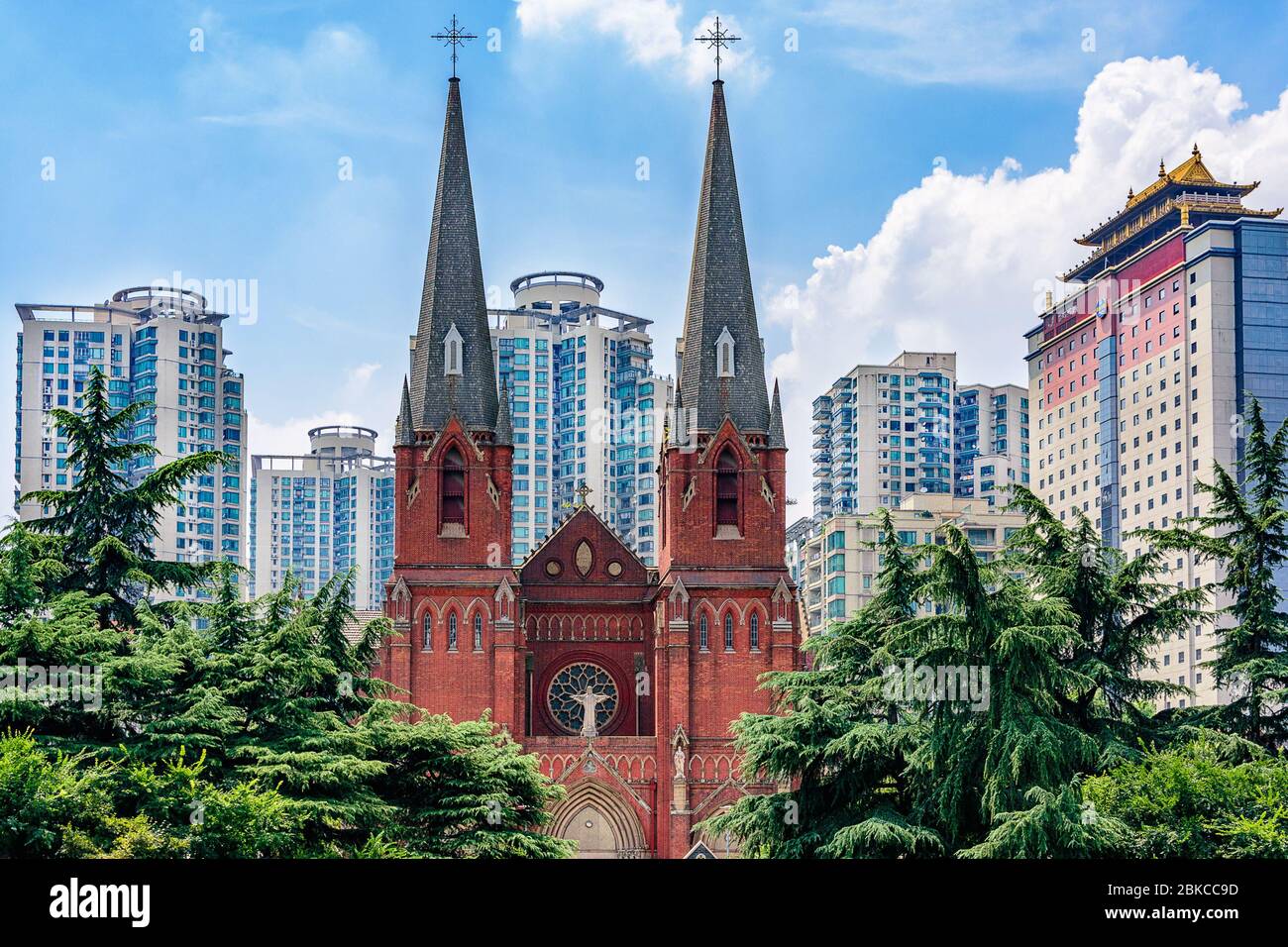
St_Ignatius_Cathedral_Xujiahui.
Frequently Asked Questions
Frequently Asked Questions about St. Ignatius Cathedral, Xujiahui
-
What are the opening hours for St. Ignatius Cathedral?
The cathedral is open to visitors on Saturdays from 1:00 PM to 4:00 PM and Sundays from 2:00 PM to 4:00 PM. Guided tours by volunteers occur every half hour during these times. -
Are there English Mass services available?
Yes, there is an English Mass held on Sundays at 12:00 PM. Additionally, other Mass times are available throughout the week, including on Saturdays. -
How do I get to St. Ignatius Cathedral using public transport?
You can reach the cathedral by subway by taking Line 1, Line 9, or Line 11 and getting off at Xujiahui Station. From there, it’s about a 400-meter walk south to the cathedral. Alternatively, several bus routes, including numbers 44, 93, and 548, also service the area. -
Is there an admission fee to visit the cathedral?
No, there is no admission fee to visit St. Ignatius Cathedral. Visitors are welcome to explore the cathedral during the designated visiting hours. -
What should I wear when visiting the cathedral?
Visitors are required to dress appropriately. Attire such as slippers, tank tops, and mini skirts is not allowed. It’s best to opt for modest clothing to respect the sacredness of the space. -
Can I take photos inside the cathedral?
Photography is generally permitted inside the cathedral; however, it is advisable to keep noise to a minimum and be respectful of other visitors and worshippers. -
Are there any specific visitor guidelines I should follow?
Yes, visitors are required to maintain silence, ensure mobile phones are turned off or silent, and refrain from damaging any property. Additionally, please stay clear of areas that are closed to the public. -
What historical significance does St. Ignatius Cathedral hold?
St. Ignatius Cathedral is the largest Roman Catholic cathedral in Shanghai and is known for its Gothic architectural style. It has a rich history, dating back to its construction in the early 20th century, and has served as a central hub for Catholicism in the region, playing a significant role in Shanghai’s cultural and historical landscape.
Final Thoughts on Your Trip
As you wrap up your visit to St. Ignatius Cathedral in Xujiahui, take a moment to reflect on the rich tapestry of history, architecture, and spirituality that this magnificent structure embodies. From its stunning Gothic design to the intricate stained glass windows and serene altars, the cathedral offers a glimpse into the enduring legacy of faith and community in Shanghai.
Whether you attended a mass, marveled at the artistry, or simply found a quiet corner for contemplation, your experience here is sure to resonate long after you’ve left. The cathedral stands not only as a place of worship but as a testament to resilience, having weathered the tides of history and emerged more beautiful than ever.
As you continue your journey through Shanghai, carry with you the peace and inspiration of this sacred space, and let it remind you of the connections we all share, transcending time and culture. Safe travels, and may your adventures be filled with wonder!